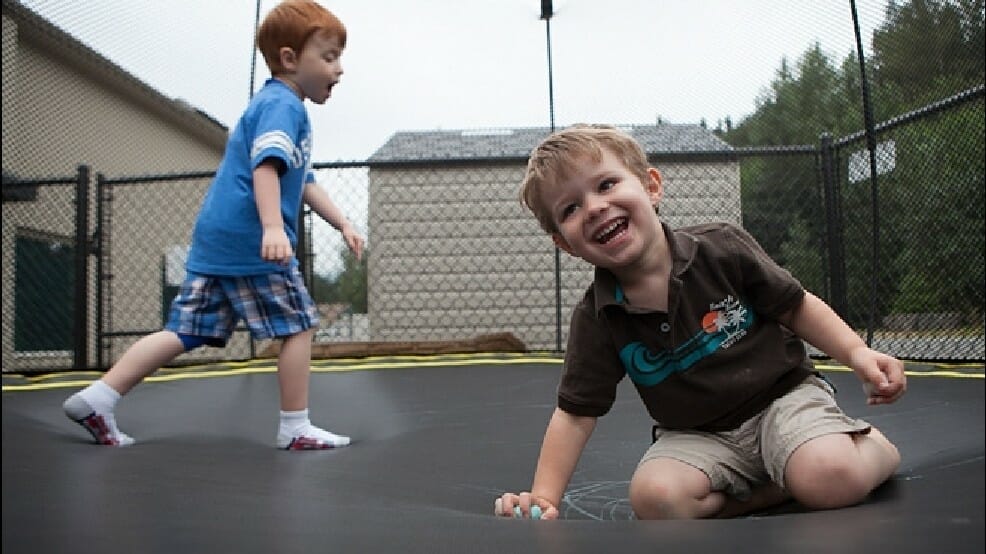Trampoline therapy has been shown to provide sensory input and improve coordination, balance, and motor skills. It can also help children with autism build self-esteem and confidence as they gain strength and agility on their terms. Read on to learn bout the benefits of trampoline therapy for autistic children and how to effectively implement this form of exercise into one’s routine. Let’s explore the benefits of trampoline therapy for Autism.
What Is Trampoline Therapy?
An individual on the autistic spectrum may have difficulty processing proprioceptive information. This implies they have trouble processing feedback from their muscles, tendons, and ligaments. In addition, due to their extreme sensitivity to contact, autistic youngsters may be too rough with their work when they write or paint.
Because of their hypersensitivity to posture and movement perceptions, they may also have trouble processing vestibular information. A trampoline may provide children with the ideal activity to foster their sensory integration, whether they are adrenaline junkies or have problems sitting still for long periods of time.
Trampoline treatment, also known as rebound therapy, uses trampolines to enhance the emotional and physical well-being of autistic children. Rebound therapy has various advantages, from creating relaxation, assisting with sensory disturbances, boosting core strength, or producing dopamine—since bouncing on a trampoline is pleasurable!
While the trampoline’s pulsating motion meets sensory demands, trampolines are effective.
Related: Best Indoor Trampoline for Autism
Benefits of Trampoline Therapy for Autism
1. Enhance Sensory Input
The interpretation of muscle and joint sensations and sensitivity to motion and stability are common physical difficulties for people with Autism Spectrum Disorder. This explains why some children have abnormal limbic movement or unusual touch sensitivity.
On the other hand, the constant up-and-down motion that a trampoline produces may have many positive effects.
It’s considerably more successful than the typical swaying backwards and forward and restlessness in people with ASD. It helps these children’s bodies learn how to translate the signals supplied to their brains without their awareness.
Also, they may practice maintaining their balance in a risk-free setting, which can help them become more attuned to their spatial surroundings and the relative placement of their own bodies.
2. Improve Coordination and Balance
Trampoline therapy has been found to help improve balance and coordination skills in people with Autism. For instance, the proprioceptive and vestibular systems are stimulated when a child jumps on a trampoline. This heightened sensory input can help with posture, core strength, and balance.
In addition to improving physical coordination, jumping on a trampoline requires concentration, self-awareness, and mindfulness—all of which can help children with Autism become more aware of their bodies and better regulate their behaviour.
3. Enhance Motor Skills
Like how it boosts balance and coordination, trampoline therapy can also help improve motor skills in autistic children. This is due to the repetitive nature of jumping up and down, which helps children become more comfortable with their physical abilities. It also encourages them to practice controlling their movements and movements of their limbs.
You also might be interested in: How to Rebound without a Trampoline
4. Relieve Stress Through Trampoline Therapy
Autistic children often struggle with emotional regulation, leading to stress and anxiety. Trampoline therapy has been shown to provide a calming influence due to its therapeutic effects.
Jumping on a trampoline can help autistic children regulate their emotions and provide an outlet for pent-up energy. This can help them become less anxious and more relaxed. This may sound counterintuitive, but activity can actually provide relief from stress and anxiety.
5. Build Self-Esteem
You might be wondering how jumping on a trampoline can help build self-esteem. As autistic children experience the joy of mastering a new activity, their confidence will likely increase.
Additionally, when children participate in a group activity such as trampoline therapy, they are encouraged to interact with other participants and receive positive feedback from their peers. This can be incredibly beneficial for autistic children who often struggle with socializing.
Finally, even adults may find that trampoline therapy provides a great way to relax and take a break from the demands of everyday life.
6. Pleasure Experience
Jumping on a trampoline is actually incredibly enjoyable! However, despite its effectiveness as a therapeutic activity, many autistic children will simply enjoy the experience of bouncing up and down. This can bring children a sense of joy and comfort, which may help them cope with their daily struggles. The pleasure associated with trampoline therapy can also help people become more motivated to challenge themselves and try new activities.
Conclusion
Autism is a complex disorder that can be difficult to manage. Fortunately, trampoline therapy provides an enjoyable activity that can help autistic children in a variety of ways. In addition, this type of therapy is ideal for those who struggle with Autism. What are your views on trampoline therapy? Let us know in the comments section.




1 thought on “6 Benefits of Trampoline Therapy for Autism”